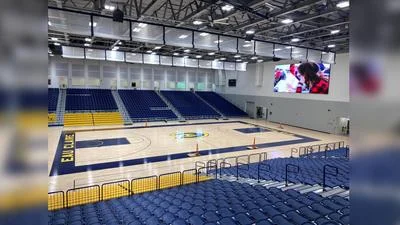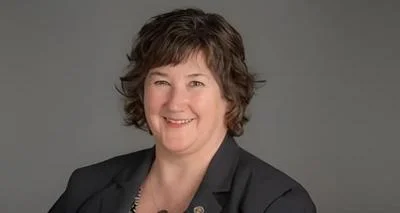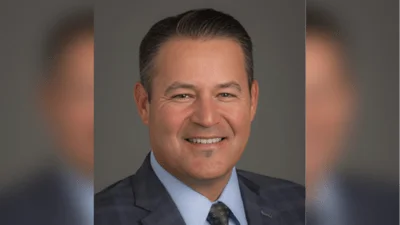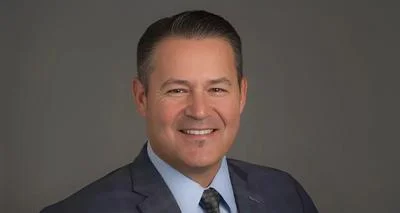Katherine P. Frank Chancellor | Official website
Katherine P. Frank Chancellor | Official website
A new Histology Lab will open this fall semester, providing educational and hands-on research opportunities for students and faculty in UW-Stout’s applied biochemistry and molecular biology, applied science, and biology programs.
“The Histology Lab enables hands-on learning in tissue preparation and analysis and provides new opportunities for biological and biomedical research. By studying the microscopic structure of tissues, we can gain valuable insights into their function and pathology,” said Lecturer Tiffany Hoage.
“Furthermore, it complements the Cadaver Lab, as students are now able to observe both microscopic (cell/tissue-level) anatomy and gross (organ-level) anatomy.”
Last spring semester, Hoage worked with seniors Ethan Kalin and Natalie Mercill to establish the space within Jarvis Hall Science Wing’s larger biotechnology labs.
Histology is the study of the microscopic structures of biological tissues and is important for medical diagnosis, forensic investigation, and scientific study.
While UW-Stout’s Histology Lab is not intended to diagnose patients, it will help students prepare for their future careers in biological and biomedical research and health care fields.
As they were establishing the Histology Lab, Kalin and Mercill learned how to operate the equipment, which includes a Leica EG1160 paraffin embedding center, a Leica RM2255 rotary microtome, a Fisher Scientific warm water bath, and staining equipment. They used such equipment only once before during a tour of Mayo Clinic’s histology department with the university’s Prehealth Society.
“The tour definitely got us interested in histology,” Mercill said.
In May, Kalin graduated from UW-Stout in applied science with a concentration in biology and minors in cognitive neuroscience and chemistry. Mercill graduated in biology from UW-Eau Claire. They now work at Mayo Clinic in Rochester. Kalin is a clinical lab technologist in a genomics lab extracting DNA for cancer and hereditary disease diagnosis. Mercill does phlebotomy as a lab services technician and is starting the cardiovascular invasive specialist program at the Mayo School of Health Science.
“Getting to work in the Histology Lab made me much more confident in my ability to pick up new techniques," Kalin said. "I believe this has helped me work through training I have undergone at my new position in Rochester."
Revisiting the lab before it opens for the semester, Kalin and Mercill practice what their peers will soon be experiencing in class. They extract the brain from a zebrafish using methods to dehydrate tissue for paraffin embedding. Zebrafish are model organisms sharing over 80% of genes known to trigger diseases like cancer types or heart disease found in humans.
“The brain of an adult zebrafish is about four millimeters long," Mercill said. "Even with that small tissue sample you can create hundreds of microscope slides.”
At the paraffin embedding center, Kalin places tissue into molten wax using forceps before adding additional wax to solidify on a cooling platform forming tissue blocks. Mercill readies sections around five microns thick using rotary microtome slicing creating perforated squares readying them onto slides dried after floating on warm water baths flattening them out adhering sections stained observing components under microscopes explained by Hoage noting specific stains visualizing cells structures interest thioflavin-S highlighting amyloid beta protein accumulates brains Alzheimer patients H&E hematoxylin eosin staining DNA purplish blue rest cell pink observing zebrafish stained H&E initiative establishing stemmed Honors College project fall 2023 involving dissecting cadaver brain Alzheimer wanted further experience seeing microscopic pathology connected mentor Dr Alex Hall PhD biomedical sciences Mayo Clinic Graduate School thrilled opportunity helping establish successfully sectioned stained cadaver brain amyloid beta plaques another project compared conventional microwave method processing zebrafish preliminary findings show both equivalent respect integrity quality important shorter processing time integrated regular period presented nearly 300 undergraduate graduate Research Day April temporal analysis Rotunda March state Capitol volunteering Cadaver tours visiting high schoolers 300 students 15 schools last semester examining organ systems 75-minute tours Pre-Health Pathways prepares entering medical other healthcare chiropractic dentistry pharmacy medicine occupational therapy veterinary degrees including biochemistry molecular biology wellness fitness rehabilitation services interdisciplinary dietetics environmental science health human development family studies psychology majors branching giving options focus choice Office Research Sponsored Programs Stout University Foundation supporting internal external grant programs
---





 Alerts Sign-up
Alerts Sign-up